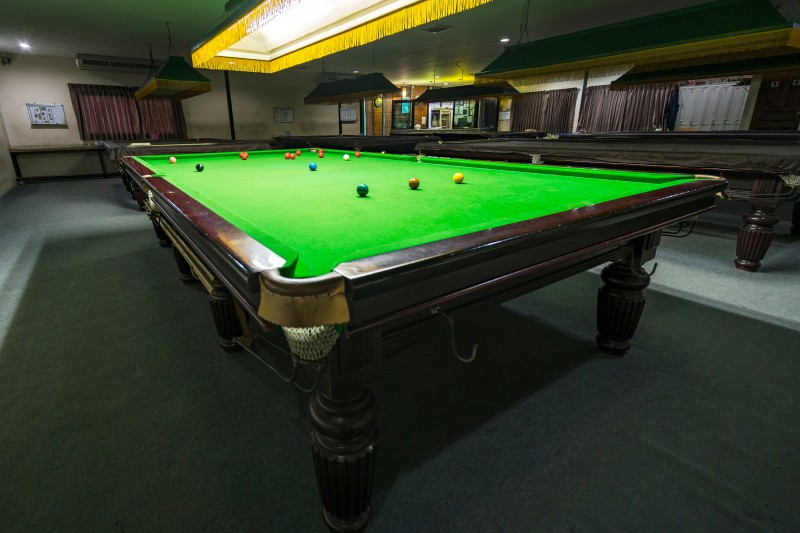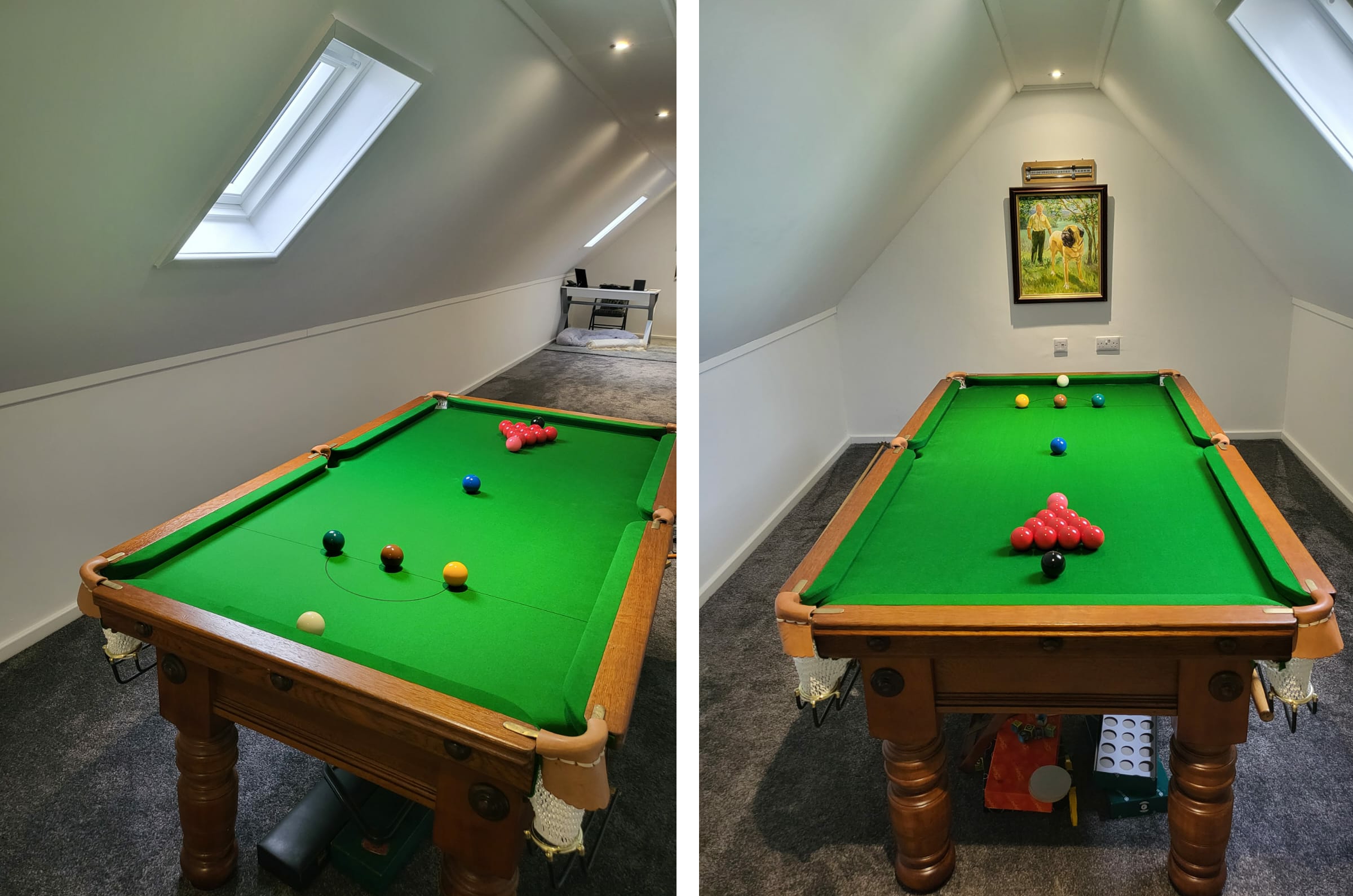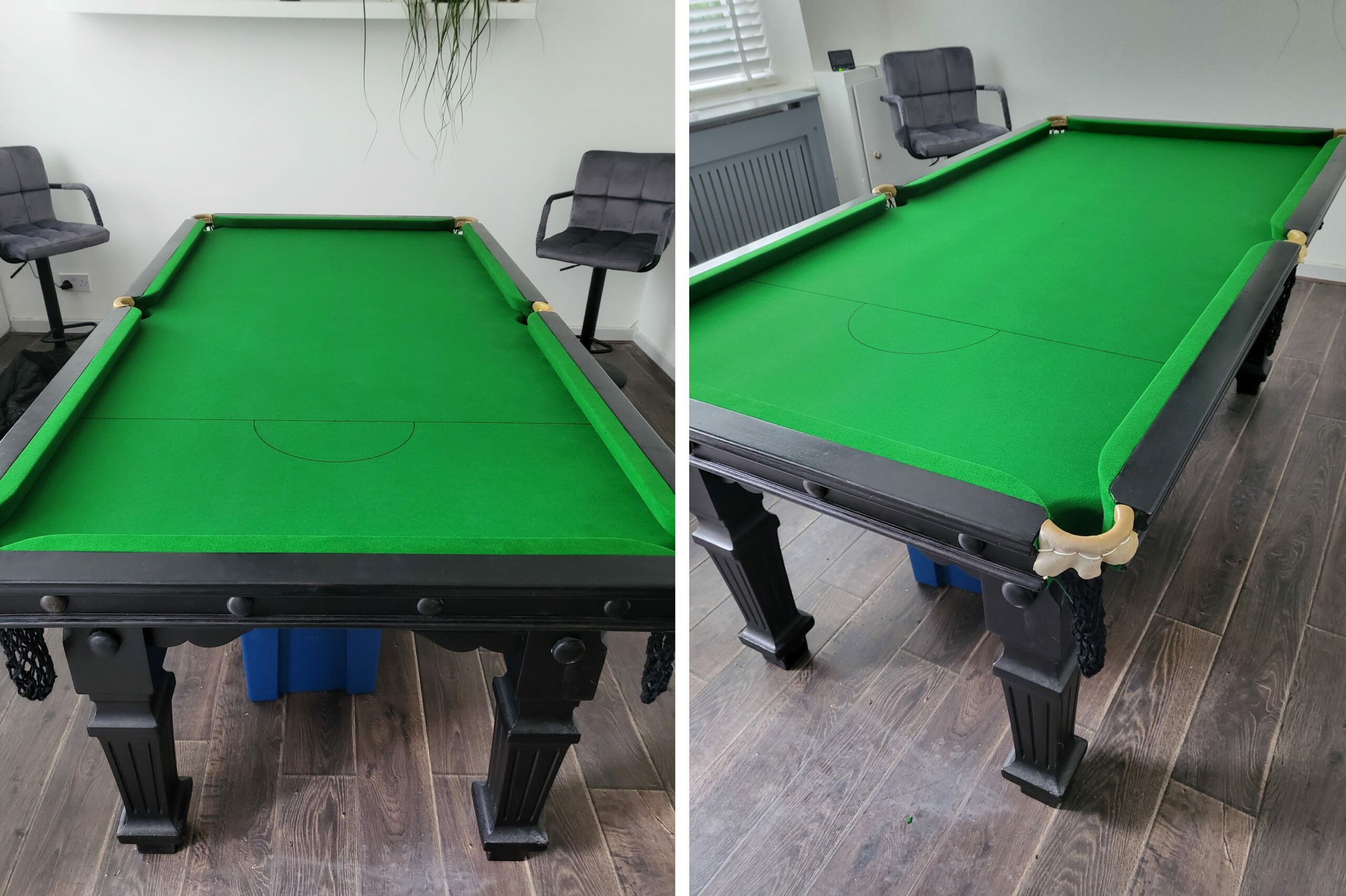The Elegance of Snooker and Its Dimensions
Snooker, a game steeped in tradition and elegance, has long been a cherished pastime in the UK. With its rich history, the game is more than just a sport; it’s a craft that demands precision, skill, the right equipment and snooker table size.
Central to a genuine snooker experience is the snooker table size. Many might believe that any large table would suffice, but in reality, the dimensions of a snooker table can greatly influence gameplay. As a snooker table specialist, I can’t stress enough the significance of the right table dimensions.
Brief history of snooker in the UK
Snooker’s roots trace back to British officers stationed in India during the 19th century. However, its heart has always resided in the UK:
- The first official set of rules? Drafted in Ootacamund, India, but refined and popularized in the UK.
- World Championships? Hosted in the prestigious Crucible Theatre in Sheffield since 1977.
This rich lineage has fostered a deep respect for the game and its intricacies, including the importance of snooker table size.
The importance of the right table size for a true snooker experience
Whether you’re an enthusiast aiming for professional gameplay or a club owner ensuring a top-notch experience for members, the table size matters. Here’s why:
- Gameplay Precision: An official-size table ensures that gameplay remains consistent with professional standards. Shots, angles, and strategies are all influenced by the dimensions.
- Aesthetic and Authenticity: A table with the correct dimensions provides the genuine feel of snooker. It’s not just about the game; it’s about the ambiance and tradition.
Furthermore, understanding the nuances of snooker table size helps in making informed decisions when buying or setting up a table. You wouldn’t want to compromise on your snooker experience due to an oversight in dimensions.
With the right snooker table size, you not only preserve the authenticity of the game but also enhance the player experience. Embrace the legacy of snooker by paying heed to its dimensions, and you’re bound to dive deeper into its captivating world.
Diving into the Dimensions

While many may view a snooker table as just a green expanse with pockets, as a snooker table specialist, I’ve delved deep into the intricacies of their dimensions. The snooker table size is pivotal to the game, and there’s more variation than most realise.
Full-size tables: The professional standard
When you visualise professional snooker tournaments, you’re most likely picturing a full-size table. And for a good reason:
- Dimensions: Typically, 12 feet by 6 feet.
- Benefits: Offers a genuine professional snooker experience. It’s the gold standard for international competitions.
Being the most renowned snooker table size, it’s sought after by enthusiasts aiming for the most authentic gameplay. Yet, it’s essential to remember that it demands a spacious setting.
Medium and smaller tables: Benefits for home use and smaller clubs
Not everyone has the luxury of space for a full-size table. Thankfully, various sizes cater to different needs:
- Medium Tables: Often measuring around 10 feet by 5 feet. Ideal for homes and venues with limited space while still offering a challenging game.
- Smaller Tables: Sizes can vary, often ranging between 6 to 8 feet in length. Perfect for children, beginners, or rooms with significant space constraints.
While they might not provide the exact professional feel, they indeed offer versatility and adaptability.
The intricacies of table measurements: playing area, cushion, and rail dimensions
It’s not just about the length and width. When we talk about snooker table size, several facets come into play:
- Playing Area: This refers to the actual area where the game takes place, excluding the table’s cushions. The exact dimensions can vary slightly based on the table’s overall size.
- Cushions and Rails: They border the playing area, influencing the ball’s rebound. Proper cushion and rail dimensions ensure consistent gameplay and shots.
A table might seem superficially correct in size, but without the right balance of these components, the game’s integrity could be compromised.
Choosing the right snooker table size isn’t merely a matter of space or budget. It’s about ensuring that each game played is as close to the authentic snooker experience as possible. Recognizing the variations and intricacies of dimensions equips you to make an informed decision, ultimately elevating your snooker journey.
Room Requirements: Making Space for Your Table

Acquiring the right snooker table size is only half the equation. To truly enjoy the game, the room housing the table requires special attention. After all, snooker is not just about striking the cue ball; it’s about movement, positioning, and strategy, all of which demand adequate space.
The ideal room dimensions for different sizes
Selecting the perfect room for your snooker table starts with understanding its spatial demands:
- Full-size tables (12 feet by 6 feet): Aim for a room size of at least 22 feet by 16 feet. This provides ample space for unhindered cueing and movement.
- Medium tables (10 feet by 5 feet): A room size of roughly 20 feet by 15 feet should suffice.
Of course, these are approximate guidelines. Always consider other room elements and personal comfort levels.
Considering additional space for cueing, spectators, and other furniture
While the table is the star of the show, don’t forget about the supporting cast:
- Cueing: Extra space ensures players can take shots without obstructions, even at tricky angles.
- Spectators: If you often host games, allocate space for seating. After all, snooker is as much a spectator sport as it is a player’s game.
- Furniture: Scoreboards, cue racks, and refreshment tables – all need their dedicated spots, enhancing the overall playing environment.
The room should harmoniously blend functionality with aesthetics for a complete snooker experience.
Tips for optimizing your space and positioning your table
Creating the ideal environment for your snooker table isn’t just about size but also about intelligent space utilization. Here are some nuggets of advice:
- Lighting: Ensure even lighting across the table. Position the table away from direct sunlight to avoid inconsistent light and potential fabric fading.
- Obstructions: Avoid placing the table near pillars, beams, or low ceilings. Unobstructed space is key to fluid gameplay.
Remember, the goal is to create an environment that complements your snooker table size, ensuring every game is an experience, not just a pastime.
Ensuring that your room meets the requirements of your chosen snooker table size is pivotal. It transforms a simple game into an event, and a room into an arena. As with the game itself, precision and attention to detail in room preparation will set the stage for countless memorable snooker moments.
Comparing Snooker to Other Pool Games: Table Size Differences
For the uninitiated, a table with pockets might all seem the same. But delve a bit deeper, and you’ll quickly realize the vast differences in the world of cue sports. As a snooker table specialist, I’ve witnessed firsthand the variations in snooker table sizes compared to other pool games. Let’s unravel the distinctions.
How snooker table dimensions differ from English billiards, American pool, and other cue sports
Each game, with its unique rules and balls, demands a specific table. Here’s a quick comparison:
- Snooker: Traditionally 12 feet by 6 feet, it’s a game of precision and strategy. The snooker table size ensures a challenging play with its larger surface and smaller pockets.
- English Billiards: Played on the same size as snooker, yet the game’s dynamics are entirely different, focusing on cannons and pots.
- American Pool: Tables are often 9 feet by 4.5 feet or 8 feet by 4 feet. Pockets are more extensive, and the felt is typically faster.
Such differences highlight the unique identity and challenges each game offers, largely influenced by their table dimensions.
Why the differences matter: Understanding gameplay variations
The snooker table size isn’t a random choice. It’s intricately linked to the game’s character:
- Strategic Play: Snooker’s larger table and smaller pockets demand precision. It’s a game where strategy often triumphs over raw power.
- Scoring System: The variation in pocket sizes across games affects scoring techniques and strategies. Wider pockets might seem easier, but each game has its set of challenges.
The table dimensions guide the playstyle, techniques, and even the mindset a player adopts. Recognizing this can greatly enhance appreciation and mastery of the game.
It’s easy to group all cue sports under a single umbrella. Yet, when you immerse yourself in each game, the differences, especially in table size, become stark. These differences don’t exist to say one game is superior to the other. Instead, they emphasize the rich tapestry of skills, strategies, and histories that each game offers.
For those considering delving into the world of cue sports, understanding these differences is crucial. It will influence your choice of game, equipment, and even the space you dedicate to it. But, most importantly, it will deepen your respect for each game and its unique challenges.
Buying Guide: Choosing the Right Snooker Table Size for Your Needs

Whether you’re a club owner or a passionate individual enthusiast, selecting the correct snooker table size is a decision that requires insight and understanding. With various options available in the market, it’s paramount to find one that fits both your space and your gameplay aspirations. Drawing from my years as a snooker table specialist, here’s a guide to help you make an informed choice.
Assess Your Space: Room Dimensions Matter
Before delving into the vast world of snooker tables, measure your available space. While you might be tempted by a full-size table, if it doesn’t fit comfortably in your room, it could hamper gameplay:
- Ample Cueing Space: Ensure there’s enough room around the table for players to take shots without obstructions.
- Viewer’s Comfort: If you’re planning to host, consider space for spectators. They shouldn’t feel cramped or obstruct the players.
Beyond the table’s size, think about movement, spectator space, and additional furniture. It’s not just about fitting the table but ensuring an optimal playing environment.
Consider Your Gameplay Goals
Your choice of snooker table size should align with your gameplay intentions:
- Professional Aspirations: If you’re training for competitive play, investing in a full-size table replicates tournament conditions.
- Casual Play: For those looking for occasional leisurely games, medium or smaller tables might be sufficient and can still offer a challenging game.
It’s essential to strike a balance between your aspirations and the practicalities of your space.
Research Brands and Reviews
Once you have a clear picture of your needs, dive into the world of brands. Like any significant purchase, the reputation of the brand matters:
- Quality: Established brands generally guarantee a high level of craftsmanship and longevity.
- Reviews: Look at what other buyers are saying. Often, they’ll highlight aspects of the table you might not have considered.
Take your time, and don’t rush. A snooker table is a long-term investment.
In conclusion, buying a snooker table isn’t just a purchase; it’s an investment in countless hours of gameplay, practice, and memories. Your choice in snooker table size will influence your game, the ambiance of the room, and the experiences of everyone who plays on it. Thus, choose wisely, with foresight and research, and you’ll have a table that remains a cherished possession for years to come.
For further advice on the best Snooker Table size for your room contact me at IQ Pool Tables or call 0161 494 8485
